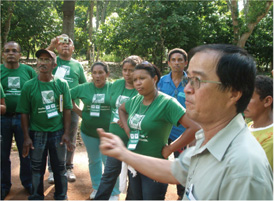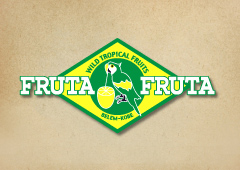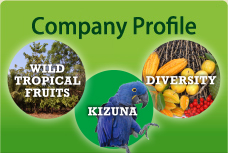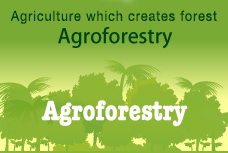
Tomé-açu is located approximately 230km to the south of Belém, the capital of the state of Pará near the mouth of the Amazon River. It has the longest history as a Japanese settlement in the northern region of Brazil, and is widely known as a town with many ethnic Japanese, with approximately 300 ethnic Japanese families currently living there.

The history of Tomé-açu as a Japanese settlement began on September 22, 1929. On July 24, 1929, the Montevideo Maru departed from Kobe Port carrying 189 Japanese immigrants made up of 42 families and 9 people traveling alone, and arrived in Tomé-açu after a journey lasting around two months. Actually, it is also known that Japanese who migrated to Peru and crossed the Andes from there, Japanese who had worked in Manaus and Belém after crossing the Atlantic from England, and the martial artist known as "Conde Koma" (Mitsuyo Maeda) who became the father of Brazilian Ju Jitsu, had also lived in the Amazon from around 1907. However, as these were not immigrants officially sent by the Japanese government, 1929 is held to be the year Japanese first settled in the Amazon.

Montevideo Maru
(Photo provided by Mitsui O.S.K. Lines)
The objective of the immigrants to Tomé-açu was to succeed in developing the Amazon, and making a triumphant return to Japan, but the settlement in a harsh environment cut off from civilization was fraught with difficulties.
They were faced with an untouched primeval forest, and had to begin by clearing the forest and cultivating the land. Furthermore, due to their lack of knowledge about farming in the tropics, the farming of cacao that was intended to be the main cash crop did not produce the expected results, and they began production of vegetables and rice to feed themselves. However, the Brazilians in the Amazon region did not customarily eat many vegetables, and it is said that their efforts started with teaching the locals about eating vegetables.
In addition to the backbreaking work and harsh climate, many lives were lost to malignant malaria, which is endemic in the tropics. As the number of gravestones increased by the day, countless settlers abandoned their efforts midway. The Amazon was even called the "Green Hell".
Although Tomé-açu is just a 4-hour drive from Belém now, it was referred to as a "remote island on land" at the time because the only way it could be reached was by riverboat. This wording gives an idea of the sense of isolation cut off from civilization.
The history of Tomé-açu cannot be described without mention of the ups and downs caused by growing pepper.
Production began with just two seedlings brought from Singapore in 1933, and production volume grew to 630t by 1953. Pepper, which was also called "black diamond" at the time, brought much wealth to Tomé-açu, with mansions (pepper palaces), along with hospitals and schools built from the wealth of pepper, leading to the prosperity of the town.
However, the pepper crop was devastated by disease, and in order to avoid the risks of serious disease and market fluctuations, CAMTA (Cooperativa Agrícola Mista de Tomé-açu) proposed the use of cacao as a key crop other than pepper to provide diversification of the crops grown. Reflection on the error of relying on monoculture led to the creation of the agricultural technique of planting several types of trees and fruit trees together to enable other crops to compensate even if one crop is lost.
This is "Agroforestry," which is gaining the attention of the world as a form of sustainable agriculture that leads to reforestation, and is expected to provide a solution to global warming.
Today, the Amazon fruits grown through Agroforestry are exported to Japan and other countries. Perhaps we would not be able to eat Amazon fruits if it were not for the effort and ingenuity of the ethnic Japanese producers in Tomé-açu. The commercialization of Amazon fruits is one of the great achievements of the Japanese settlers in Tomé-açu.
Now we look forward to further developments achieved through diversification extending to crops other than fruit and pepper.

(Photo provided by:CAMTA)

 Tomé-açu is currently gaining attention as the "home of Agroforestry" and farmers practicing the method are actively visiting the Brazilian farms surrounding Tomé-açu, areas outside the state of Pará and countries other than Brazil to promote Agroforestry.
Tomé-açu is currently gaining attention as the "home of Agroforestry" and farmers practicing the method are actively visiting the Brazilian farms surrounding Tomé-açu, areas outside the state of Pará and countries other than Brazil to promote Agroforestry.
A farming technique frequently used in the Amazon is to clear the forest for farmland and then clear a new area once the land becomes less productive, which has led to a reduction of forest. In contrast, because Agroforestry enables sustainable farming of the same land, expansion of Agroforestry could put a stop to this negative cycle. Furthermore, because small-scale planting is less expensive than large plantation-scale farming, the approach is easily adopted by small farms and subsistence farmers, and the increase in farmers able to generate a cash income also leads to regional growth. Expectations are that Agroforestry will not only contribute in environmental terms, but will provide a means for combating poverty.
FRUTAFRUTA will support further development of Tomé-açu and CAMTA by expanding the market through the sale of Amazon fruits in Japan, and will continue to work to maintain the diversity of Agroforestry and promote reforestation by encouraging diverse consumption.
 CAMTA producer Michinori Konagano, received the Award of Excellence in the Regional Development Contribution Awards (Brazilian National Awards) as the representative of CAMTA. The award was given by then President Lula on December 1, 2010. He was recognized for his contribution to improving lifestyles, regional security and conservation of the environment by volunteering to teach Agroforestry to low-income earners in the Amazon.
CAMTA producer Michinori Konagano, received the Award of Excellence in the Regional Development Contribution Awards (Brazilian National Awards) as the representative of CAMTA. The award was given by then President Lula on December 1, 2010. He was recognized for his contribution to improving lifestyles, regional security and conservation of the environment by volunteering to teach Agroforestry to low-income earners in the Amazon.








